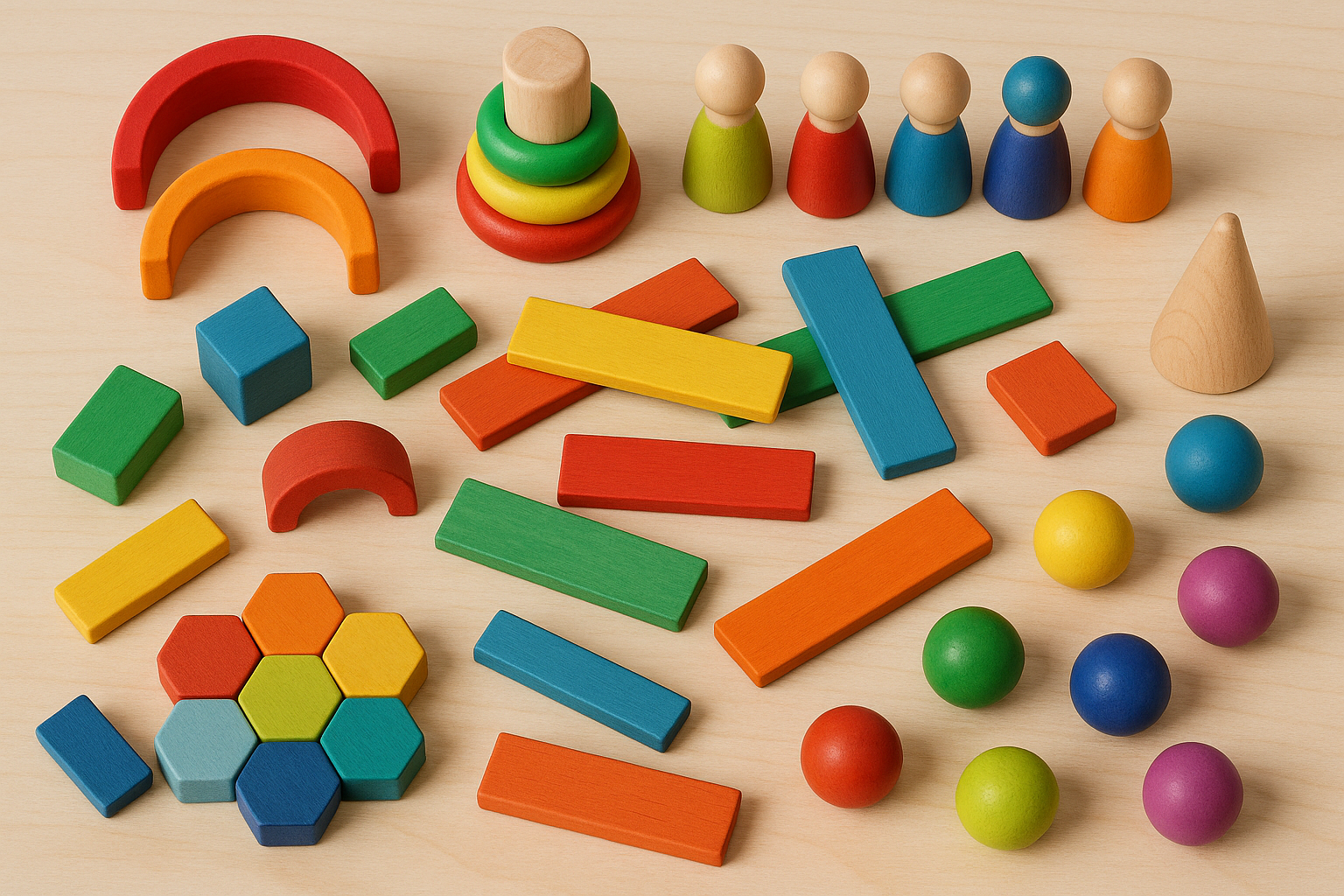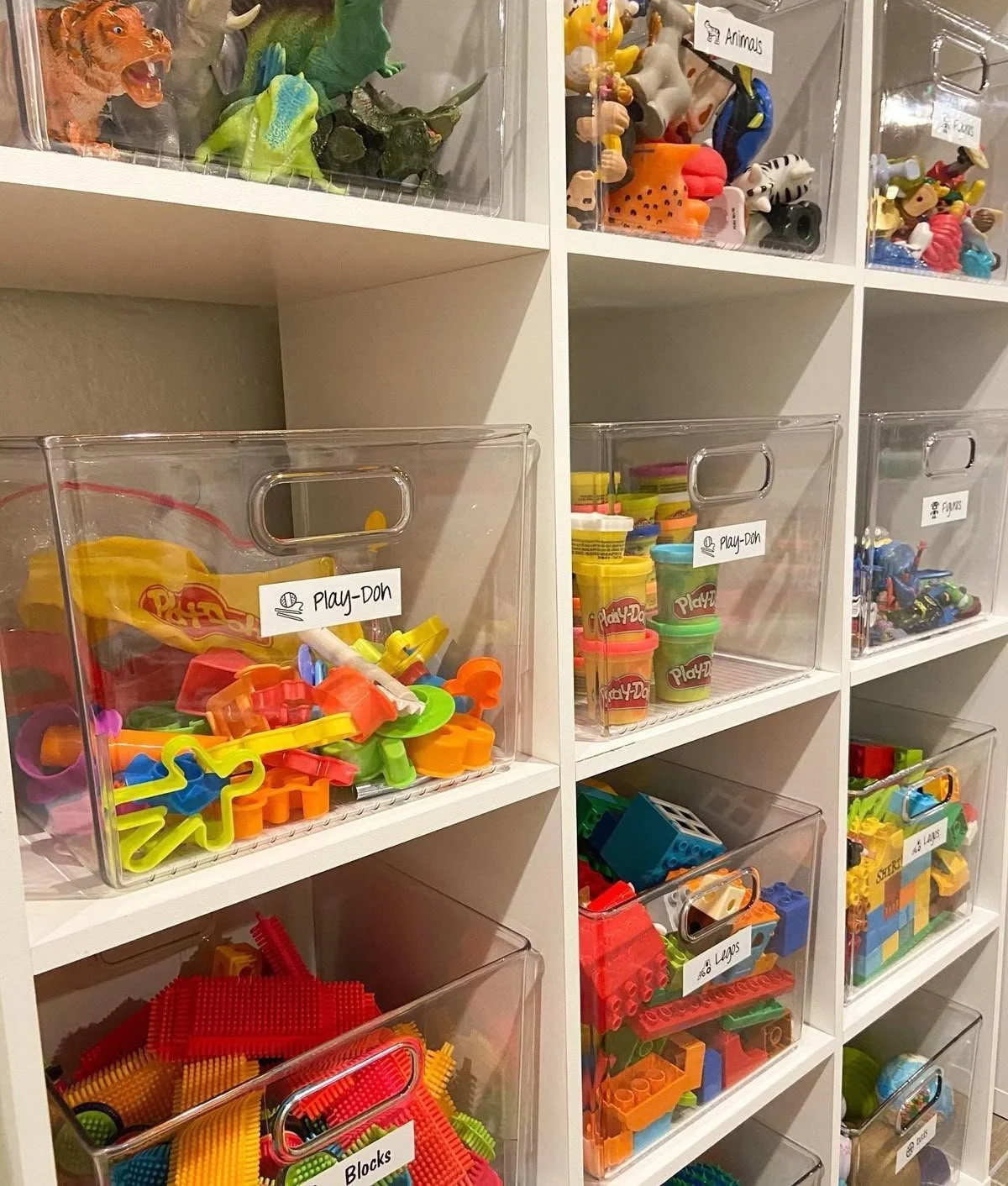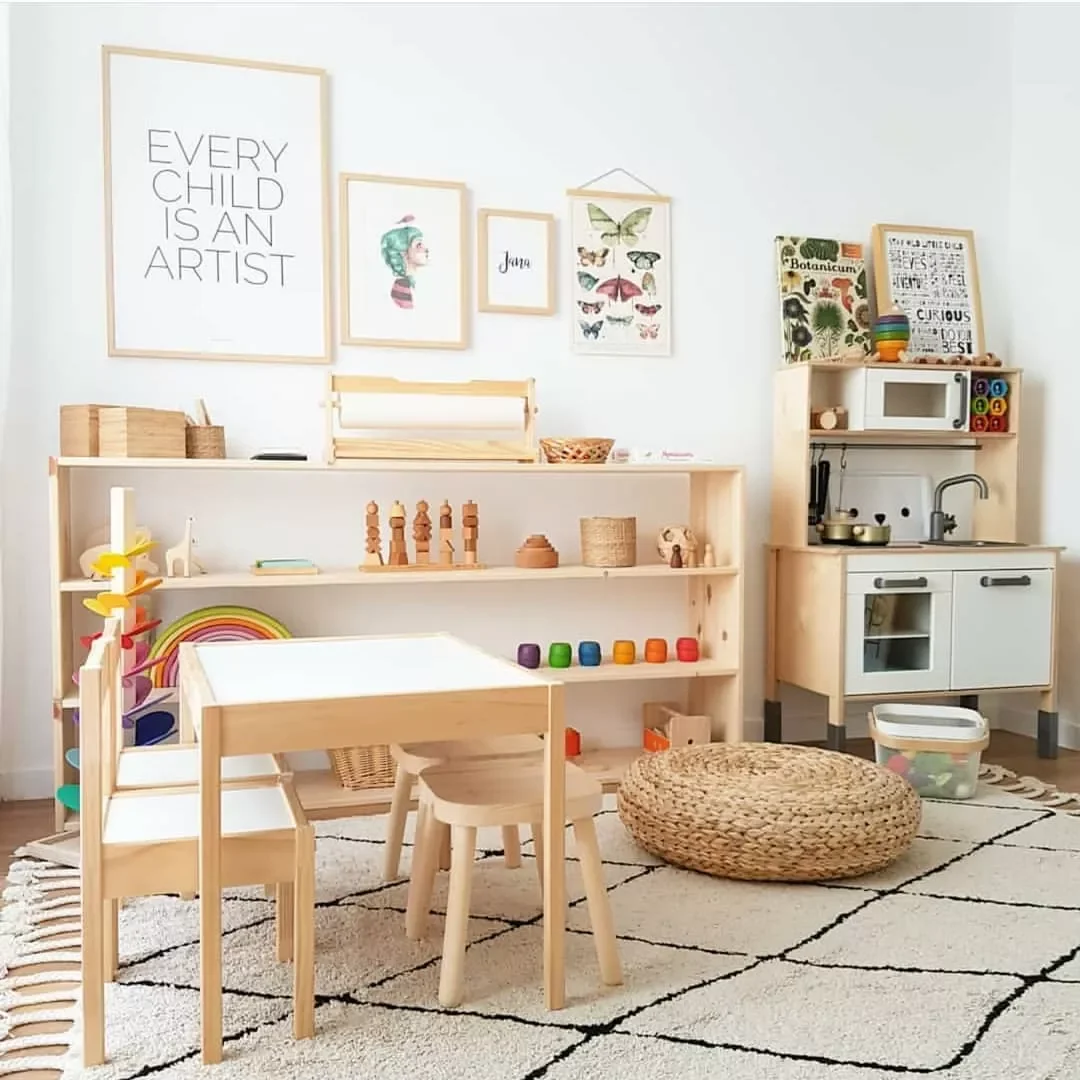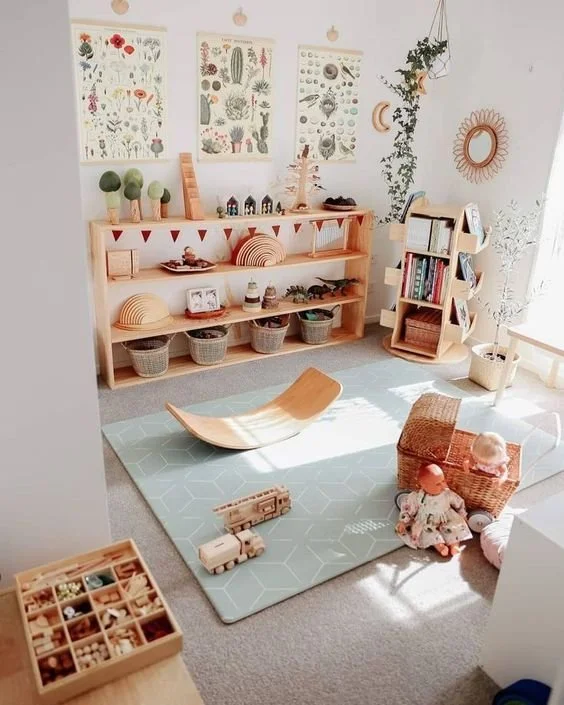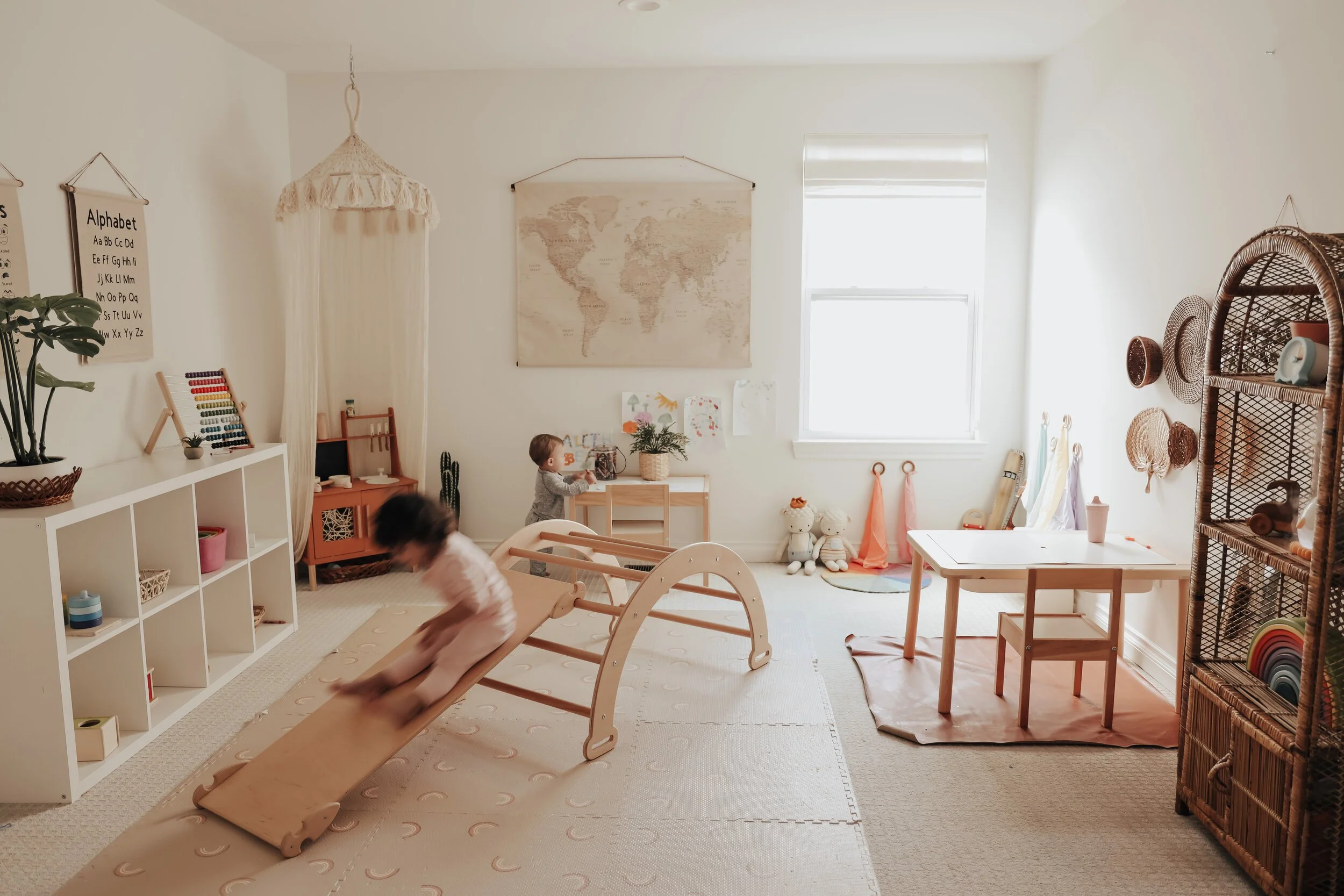Encouraging Independent Play
Imagine this scene: your child playing quietly and contentedly, maybe she’s building a “robot” with loose materials, setting up a farm with her figures, “cooking” for her baby dolls, or looking at pictures in an animal encyclopedia. The dream of nearly every parent - some quiet time while their children are entertaining themselves.
Although these scenarios can sometimes happen without our help, we can definitely encourage more of it by providing a space that invites independent play. We’ll share some ideas on how to create that space. But first, let’s dig into why independent play is important.
Understand the Goal of Independent Play
As parents, we want to help our children through challenging moments. But when we find ourselves interrupting or directing play because we see them struggling, or we have a “better” way, we may send the signal to our children that 1) they can’t solve problems themselves and 2) they always need us to play with them.
When we give our children the space to play independently, we:
Encourage creativity, problem-solving, and confidence
Help children learn to manage time and make decisions
Build resilience and attention span without adult direction
How to Design a Space That Encourages Independent Play
Choose Open-Ended Toys
Prioritize toys that can be used in many ways (e.g., blocks, dolls, pretend food, dress-up).
Avoid toys that have only one function or require screens or batteries. Screens and noises tend to distract from the quiet play.
Some of our favorite open-ended toys that are great for kids of all ages:
Magna Tiles
Keva Blocks
Legos and larger format blocks for younger children
For dress-up play, a visit to a thrift store can yield some wonderful finds like hats, scarves, small handbags, belts, etc.
We love wooden pretend food, which withstands even the roughest of play.
Organize with Accessibility in Mind
Organization and accessibility are key for a great space. If you have the best toys but your child can’t reach them, you’ll find yourself helping grab item after item.
Use open shelving with items placed within children’s reach
Group toys by type (building, pretend, sensory, etc.). This is helpful before, during and after play. And a space that’s easy for children to clean up is likely a space that they’ll be invited to play in often.
Label bins with pictures or words (great for pre-readers)
Create Zones for Different Types of Play
Quiet zone: reading nook with soft lighting and cushions
For prereaders, include lots of picture books and consider kids’ encyclopedias
Active zone: space for movement, building, or imaginative play
We love Nuggets, blocks, and dress-up clothes
Creative zone: table for drawing, puzzles, and crafts
It’s tempting to put ALL the crafting materials, but try to limit the number of available items to keep attention focused and cleanup easy
Keep Furniture Child-Friendly
Low tables, small chairs, floor pillows, or soft rugs for lounging
Remember that every piece of furniture does NOT need a defined purpose (play kitchen, worktable, LEGO table, craft desk, etc). One basic table can turn into a kitchen, science lab, art table, construction zone, etc.
Allow room for movement; no need to overfill the space!
Use Toy Rotation
Toy rotation just means swapping out toys occasionally or seasonally so not all toys are present and available at once, and what’s old can become new again.
Keeps the space feeling fresh without overwhelming your kids
Encourages deeper engagement with a smaller number of toys
Add Natural and Soothing Elements
Use neutral or soft colors to avoid overstimulation
Include natural materials like wood, cotton, or wool for a calm environment
Natural light or soft lamps help set the mood for focused play
Consider the overall feel of the space. If it feels inviting, cozy, and NOT overstimulating to you, then it will feel this way to children too.
Make It Easy to Play Without You
Avoid toys that require adult setup or supervision
Use a routine or visual schedule so kids know when it’s “independent play time”
Encourage and Model It
Show kids how to use toys in new ways, then step back
Use language like: “I can’t wait to see what you create while I do XYZ.”
Know that independent play doesn’t happen immediately, but if you provide the space, the materials and the encouragement, you’ll notice that your kids are more likely to spend those quiet moments playing by themselves!
Need help designing a space that encourages independent play?

